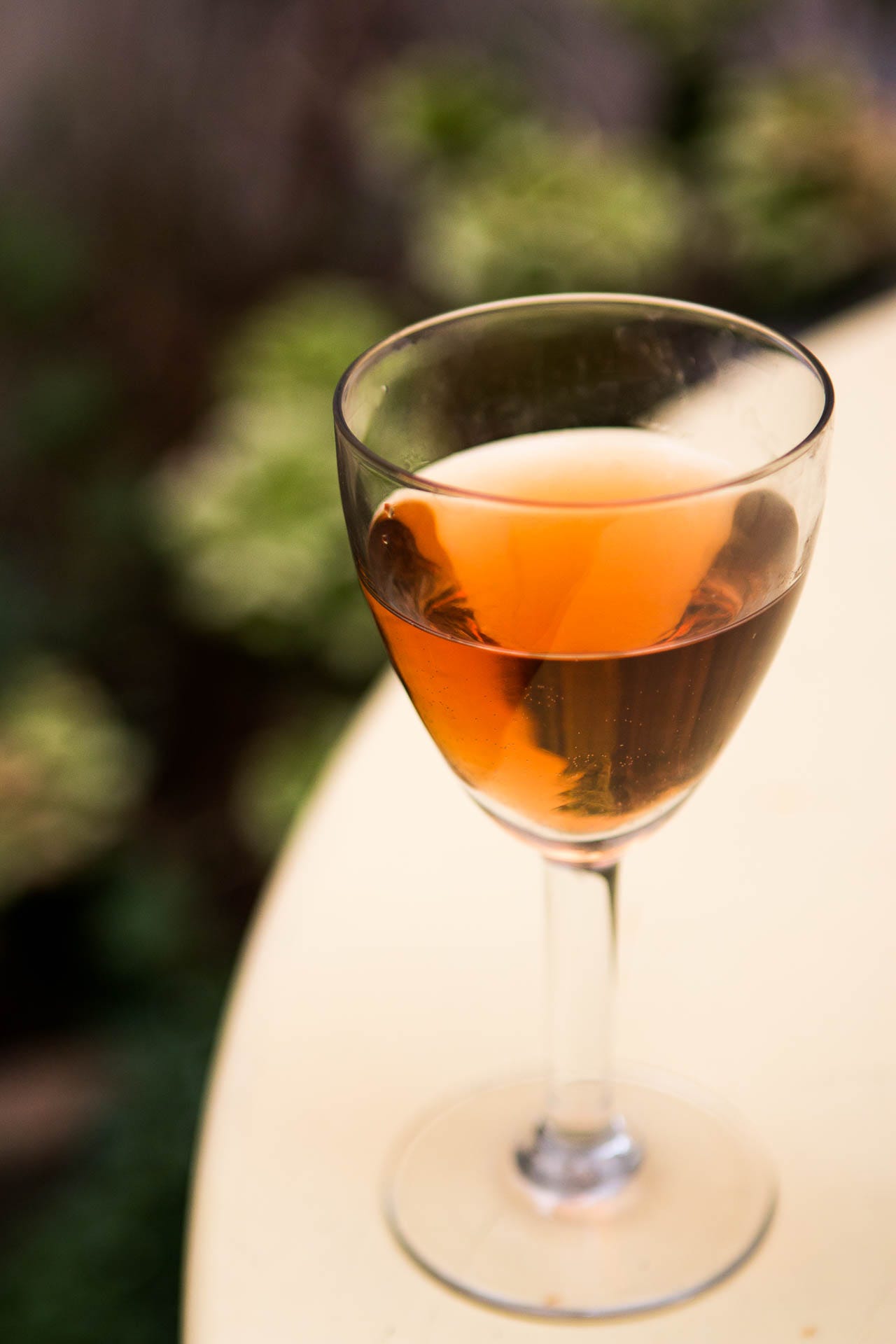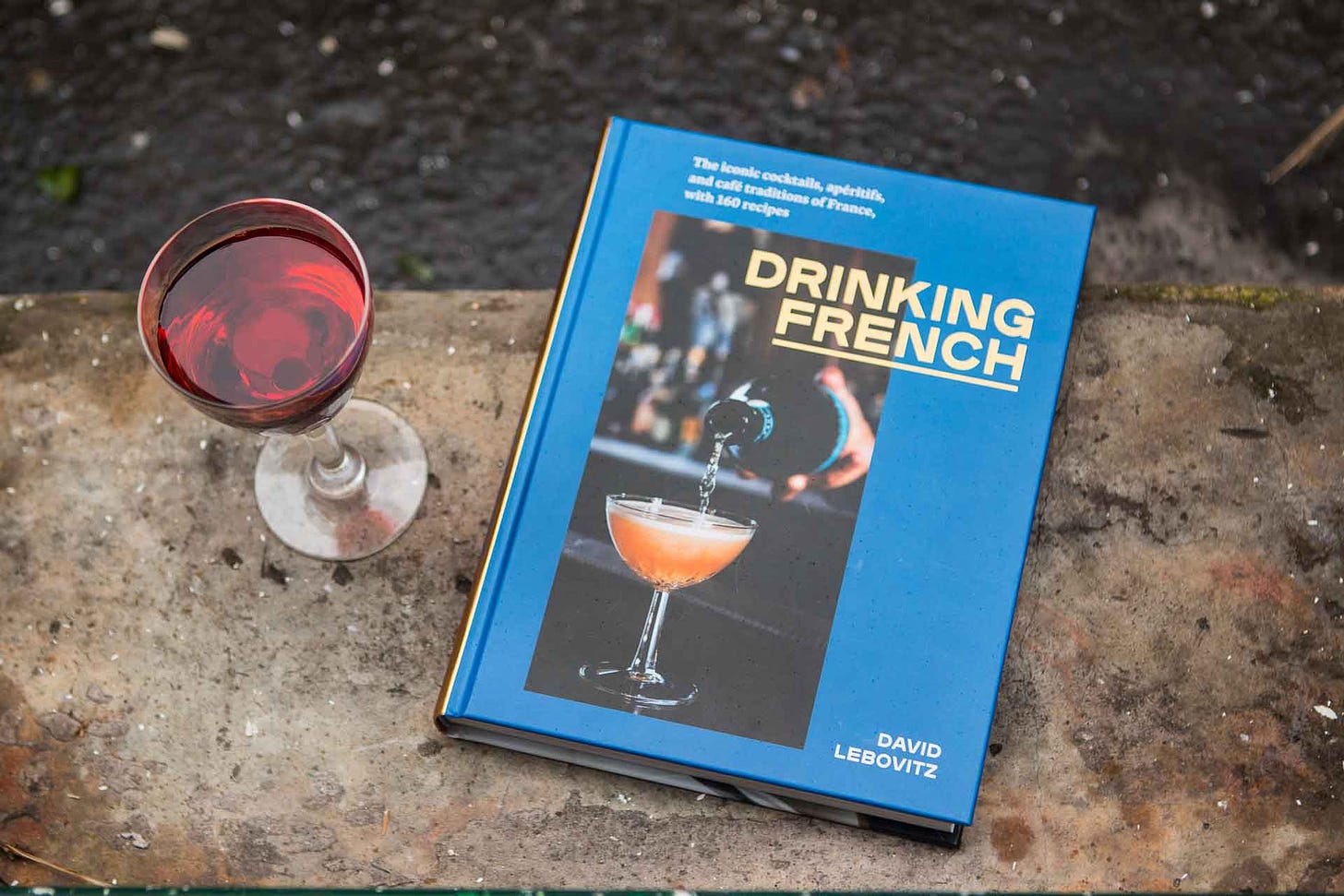The most common introduction people have to the French apéritif is the kir. Every café in France offers one, and they’re usually inexpensive, and always welcome.
Americans like our cocktails before dinner, but the French lean more towards lower-in-alcohol apéritifs, and when I brought up the cultural difference while researching Drinking French, spirits maven Tristan Simon (who is opening his first bar in Dijon) explained to me that the French start drinking earlier than their American counterparts—and drink later, too. While the French don’t necessarily drink more, they tend to drink longer, which is why you’ll see sidewalk cafés in Paris still full at 11pm, even on a Tuesday night.
While sometimes you’ll find “kirs” made with different syrups (lavender, violet, etc.), the true kir is made with crème de cassis, a rich, syrupy spirit made from black currants. There’s no cream in a crème, which can be confusing, but crèmes are sweeter than liqueurs, and because black currants are quite tannic, crème de cassis is even sweeter than other crèmes. Being France, there are a number of regulations and rules for what (and how much) goes into what, so people don’t/can’t go off-script, but in the U.S., there’s a lovely black currant liqueur, Current Cassis, made in New York, which has less sugar and leans towards the tangier side, because we’re a nation of rogues.
Aligoté is considered the classic white wine to use for a kir, due to its acidity, leading some to say the kir may have been invented to use this formerly lesser-loved wine from Burgundy that was formerly considered not-so-worthy of adulation. That’s changed in recent years, and there are excellent Aligoté wines (not to be confused with aligot, a thick, stretchy potato and cheese dish) that are terrific.
(Speaking of lesser-known things, few know about Cardinal or Communard, a kir made with red wine. Another riff on the kir is the kir normand made with sparkling cider and a soupçon of calvados, for good measure.)
When I was writing Drinking French and shopping for spirits, I had a few clerks tell me that you shouldn’t use good-quality spirits in cocktails, as they shouldn’t be tampered with. As my friend Mat Sabbagh of Sab’s Spirits (which are excellent, and he makes great cocktails with them) told me, when I asked him about that, “People wouldn’t use bad ingredients when they cook. Why should they use them in cocktails?” which is hard to argue with.
In the South of France, where we spent our summer vacation, ice is often added to wine, especially rosé. But the wife of a wine-maker told me that she adds ice to her red wine (as I saw people do in Corsica), and a friend in Burgundy even told me her mother adds water to red wine. And someone who runs one of the top Champagne cellars in the world told me it’s better to add a cube of ice to a glass of Champagne if it’s too warm than to drink tepid Champagne. (Several French Champagne houses are now making Champagnes especially meant to serve over ice, which I taste-tested here.)
So when people tell me that wine should not be “defiled,” I point out the kir, which I’ll never turn down. It’s a great pre-dinner drink when you don’t want to go through a lot of fuss and are also looking for an apéro that’s relatively light in alcohol. It’s a great fall refresher if you’re burnt out on spritzes and gin and tonics. You just need a decent white wine that’s not too rich or oaky and is bright and somewhat sharp, such as a Sauvignon blanc, Muscadet, or Chenin blanc, if Aligoté isn’t around your neck of the woods.
Kir
one drink
There are a lot of preferences and proportions for kirs, and this is the one I like the best. Some people like them with more crème de cassis, but I prefer them on the lighter side, so the fruit syrup doesn’t overwhelm the wine and the drink isn’t too sweet. But feel free to add more or less, to taste.
2 teaspoons crème de cassis
1/2 cup (125ml) cold, dry white wine
Spoon or pour the crème de cassis into a wine glass.
Add the white wine. Stir gently to mix.
This post is for all subscribers. Thanks for subscribing!











Fascinating! Kir was what we drank to feel “French” when I was a student in Nantes in the late 90’s. It being Nantes, the white wine was Muscadet or Gros plant (another local white wine, simple and cheap). I invented a new kir at home, made with leftover rosé! It’s very fruity. Interesting to read that it’s made with red wine in some places too.
So timely for me, on my way to Paris and the Riviera! It also reminds me of my mother who loved serving Kir Royale for Christmas brunch (and, of course, we continue her tradition.) Thank you for this and all your posts. I’ve been reading your newsletter, blogs and cookbooks for years.